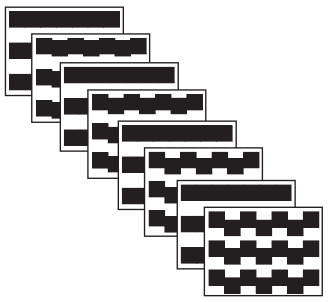Abstract
PURPOSE. We measure neural responses associated with form and motion processing in
children with anisometropia before and after treatment with spectacles and occlusion.
METHODS. In this prospective, case-control treatment study, 10 children with anisometropia
and amblyopia and 16 age-matched visually normal children participated. Steady-state visual
evoked potentials (VEP) were recorded from electrodes over the occipital cortex. The visual
stimulus comprised a horizontal bar grating into which Vernier offsets were introduced and
withdrawn periodically at 3.75 Hz. The VEP amplitude at 3.75 Hz (first harmonic [1F]) and 7.5
Hz (second harmonic [2F]) were recorded to index the sensitivity of form/position-sensitive
versus motion/transient-sensitive neural populations, respectively. Response amplitude at 1F
and 2F were recorded over a series of 10 logarithmically spaced offset sizes before and after
treatment. Main outcome measures are VEP amplitude versus displacement functions,
interocular response amplitude differences.
RESULTS. After relaxing into spectacles (minimally-treated state), form/position-sensitive
responses in the dominant/less ametropic eye of the children with anisometropia were larger
and responses in the more ametropic eye were smaller than those of controls. Motiontransient
responses were equal to those of controls in the less ametropic eye, but were
smaller than controls in the more ametropic eye. After treatment, responses did not differ
from those of controls.
CONCLUSIONS. Form and motion responses are differentially susceptible to neural deprivation
via optical blur. Form responses are more plastic than motion responses in minimally-treated
children with anisometropic amblyopia. Most treatment effects occurred above threshold range, suggesting some treatment effects are not detected clinically.

